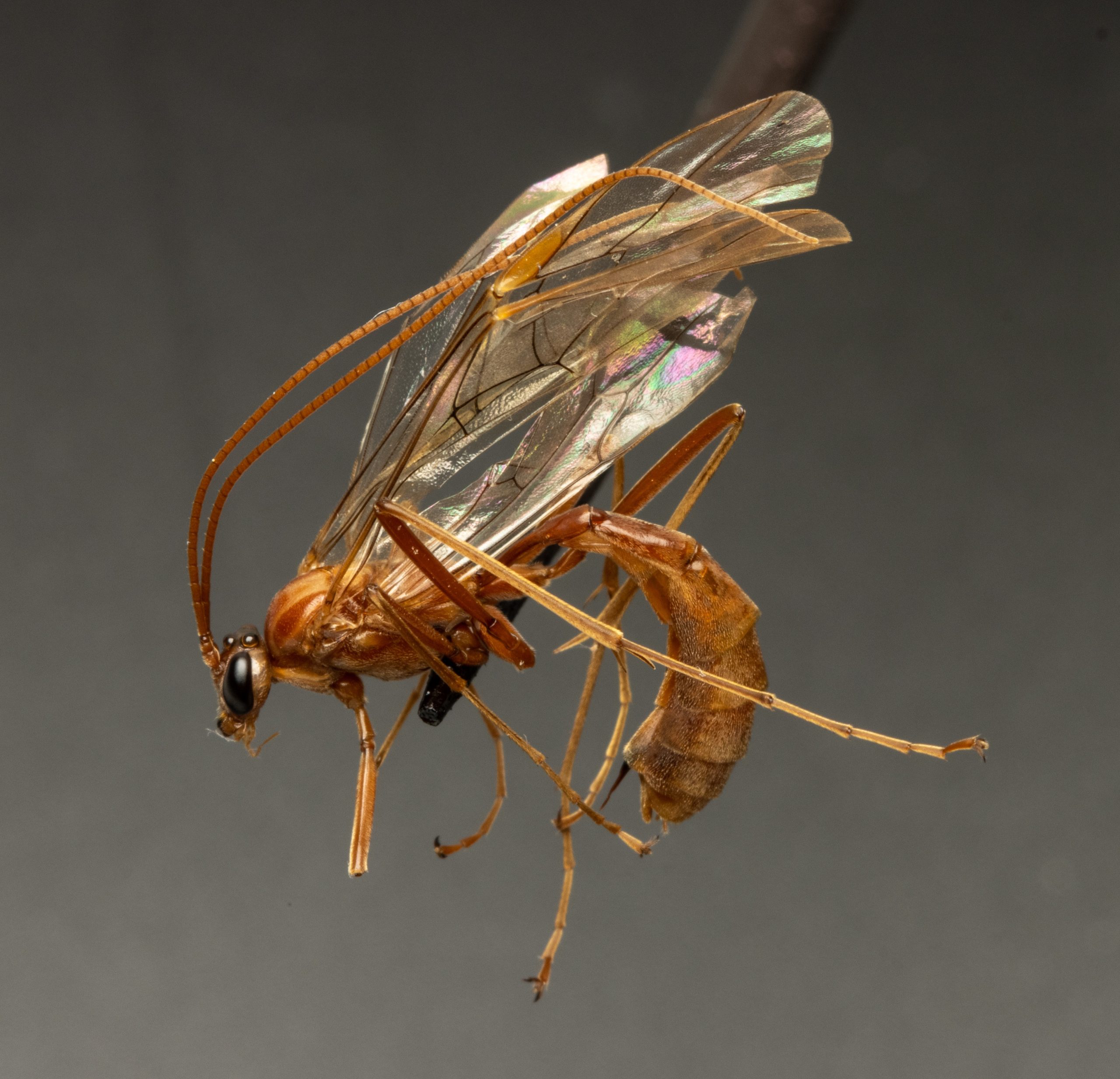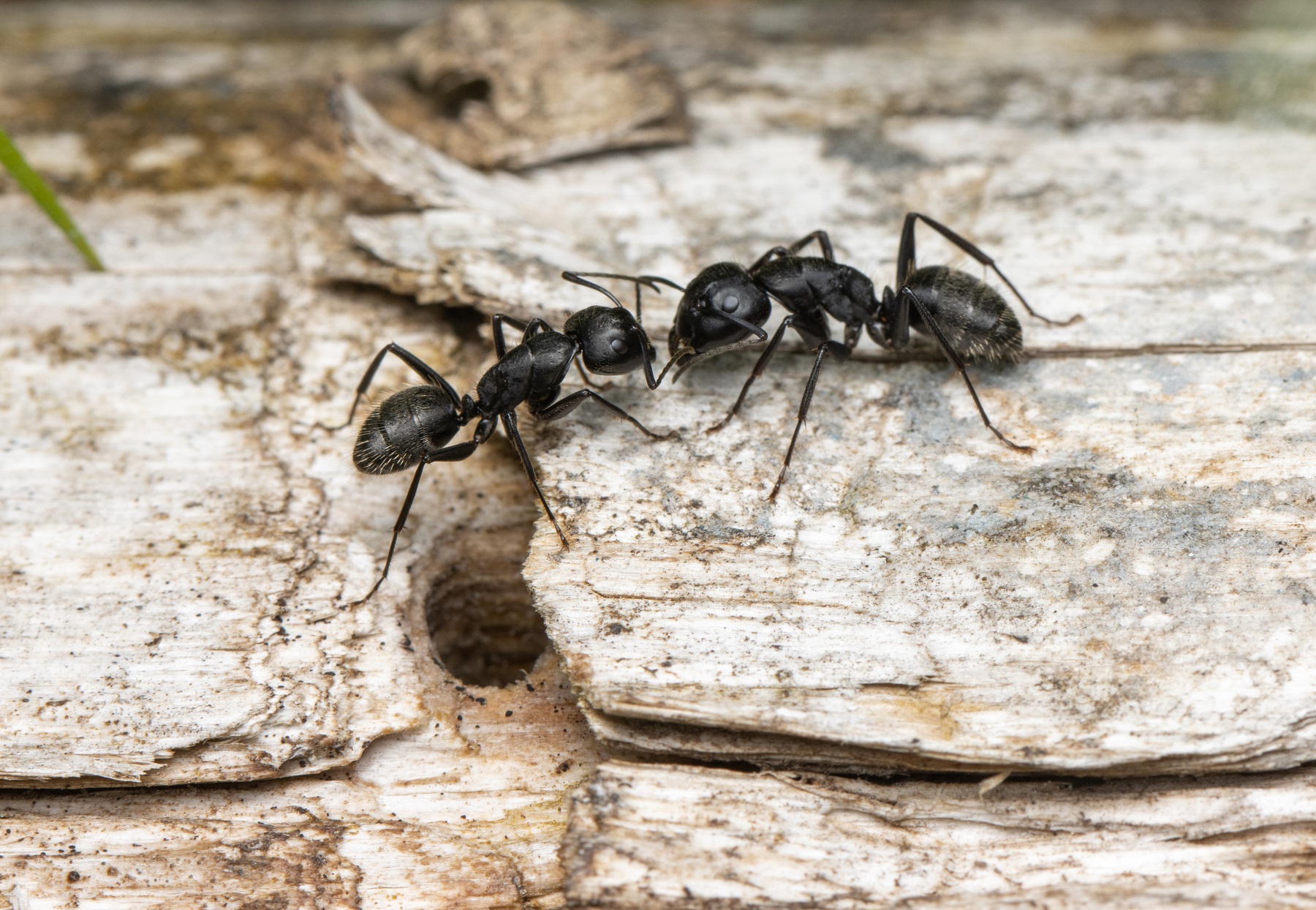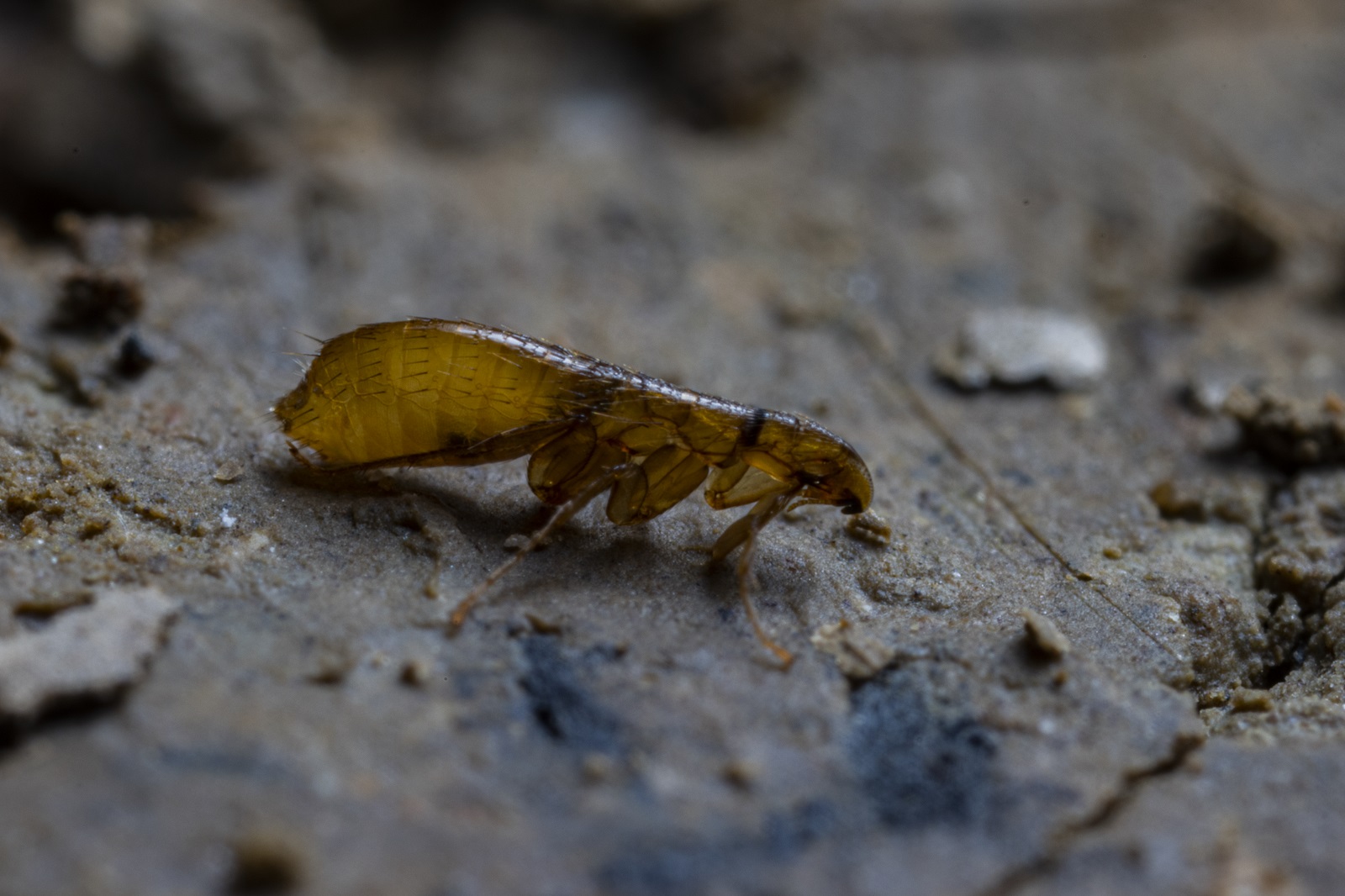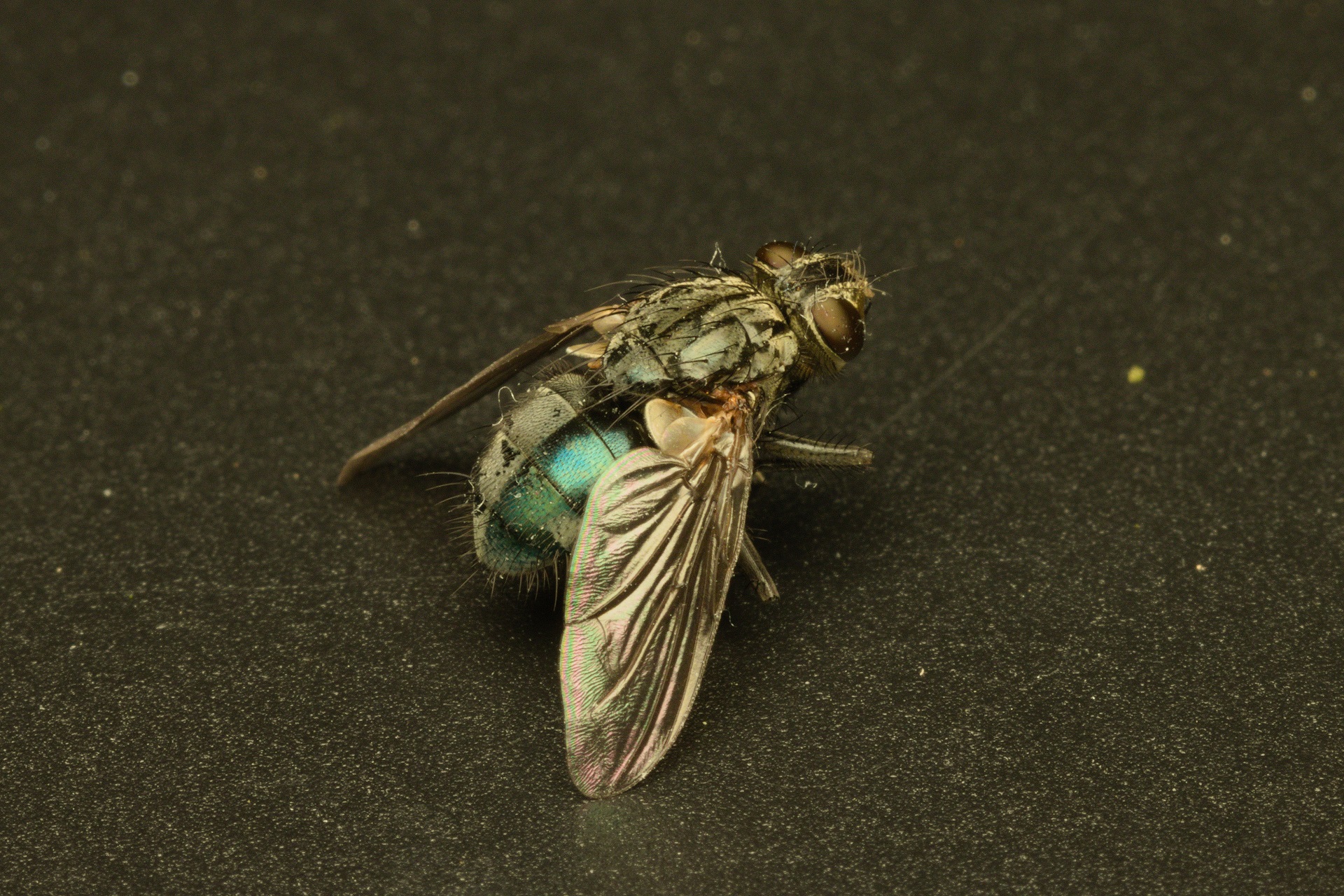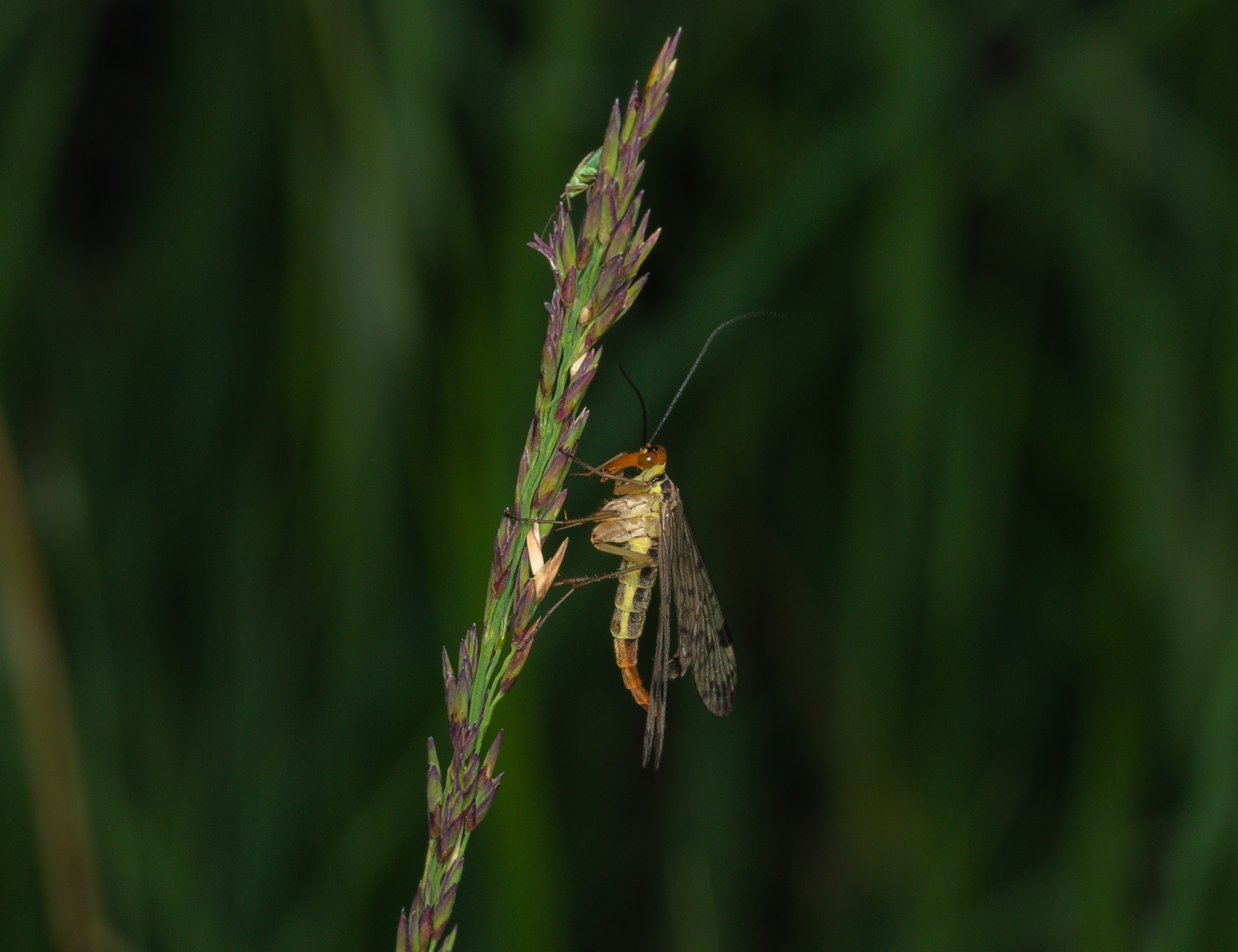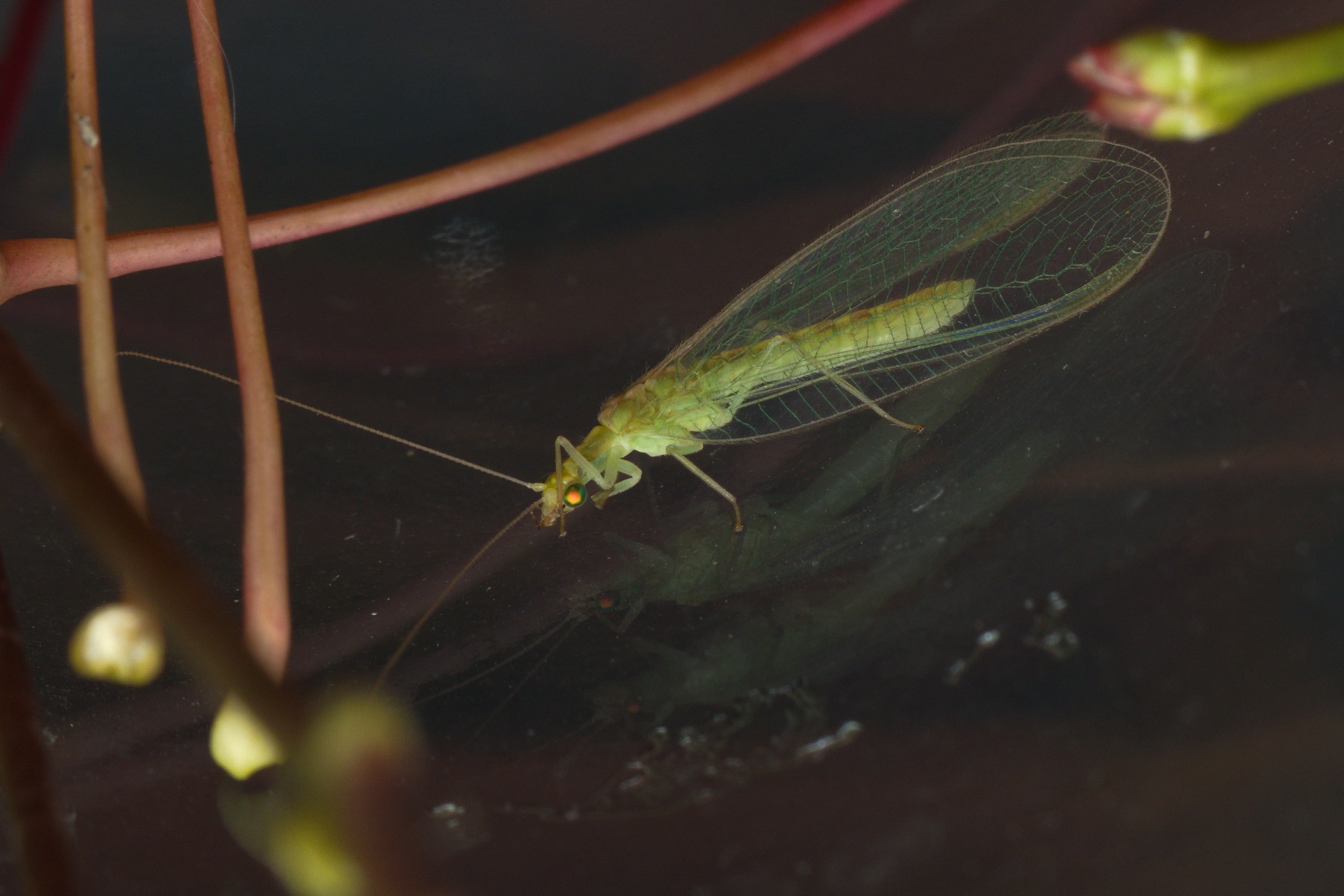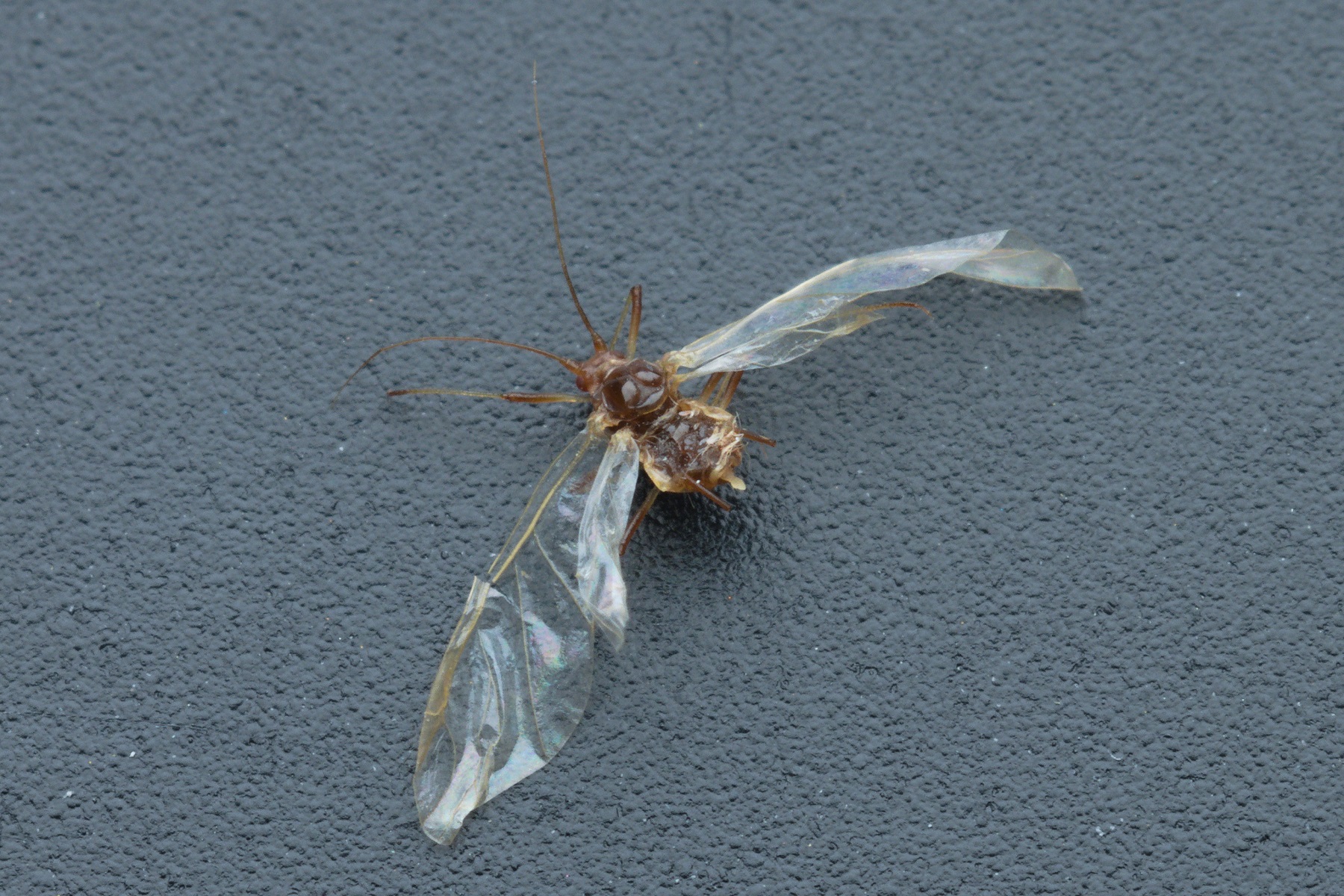Archaeognatha
Description
Bristletails (Archaeognatha) are wingless insects. They measure 15 to 20 mm in length. Their body is elongated, flattened slightly laterally, and distinctly arched dorsally in the thoracic region. The body surface is covered with small, shiny scales, usually grey and brown, arranged in distinctive patterns.
The body consists of a head, thorax and abdomen. The head is fused of acron and six segments. The head bears orthognathous (directed downward) mouthparts adapted for chewing. A characteristic feature of this group is the large maxillary palps, which can be longer than their legs and resemble antennae. The head also features long, whip-like antennae, ocelli, and large medially fused compound eyes. The thorax, as with other insects, consists of three segments: the prothorax, mesothorax, and metathorax. The thoracic segments are distinct from each other, and each bears a pair of walking legs. The abdomen is composed of 10 segments. At the end of the abdomen, there are three long appendages: a central terminal filament and two lateral cerci. Most abdominal segments also bear vestigial limb structures, known as styli.
Biology
All species are terrestrial. Some are adapted to life in coastal zones and are even capable of swimming. Most bristletails inhabit forests, where they are found primarily in leaf litter, under the bark of dead trees, and in rock crevices. They are ground-dwelling animals that move using their thoracic walking legs. Additionally, they are excellent jumpers, bending their abdomen and propelling themselves off the ground with their abdominal styli. Using this mechanism, they can jump as high as 30 cm.
Their diet primarily consists of dead plant material, algae, and mosses. Their development occurs without metamorphosis. Juvenile individuals, which closely resemble adults, reach sexual maturity after nine moults. Adults continue moulting throughout their lives. A unique feature of their moulting process is that before shedding their exoskeleton, they attach themselves to a surface using their abdomen.
The reproduction of bristletails involves courtship rituals during which males deposit a packet of sperm called a spermatophore, which is then picked up by the female through her genital opening.
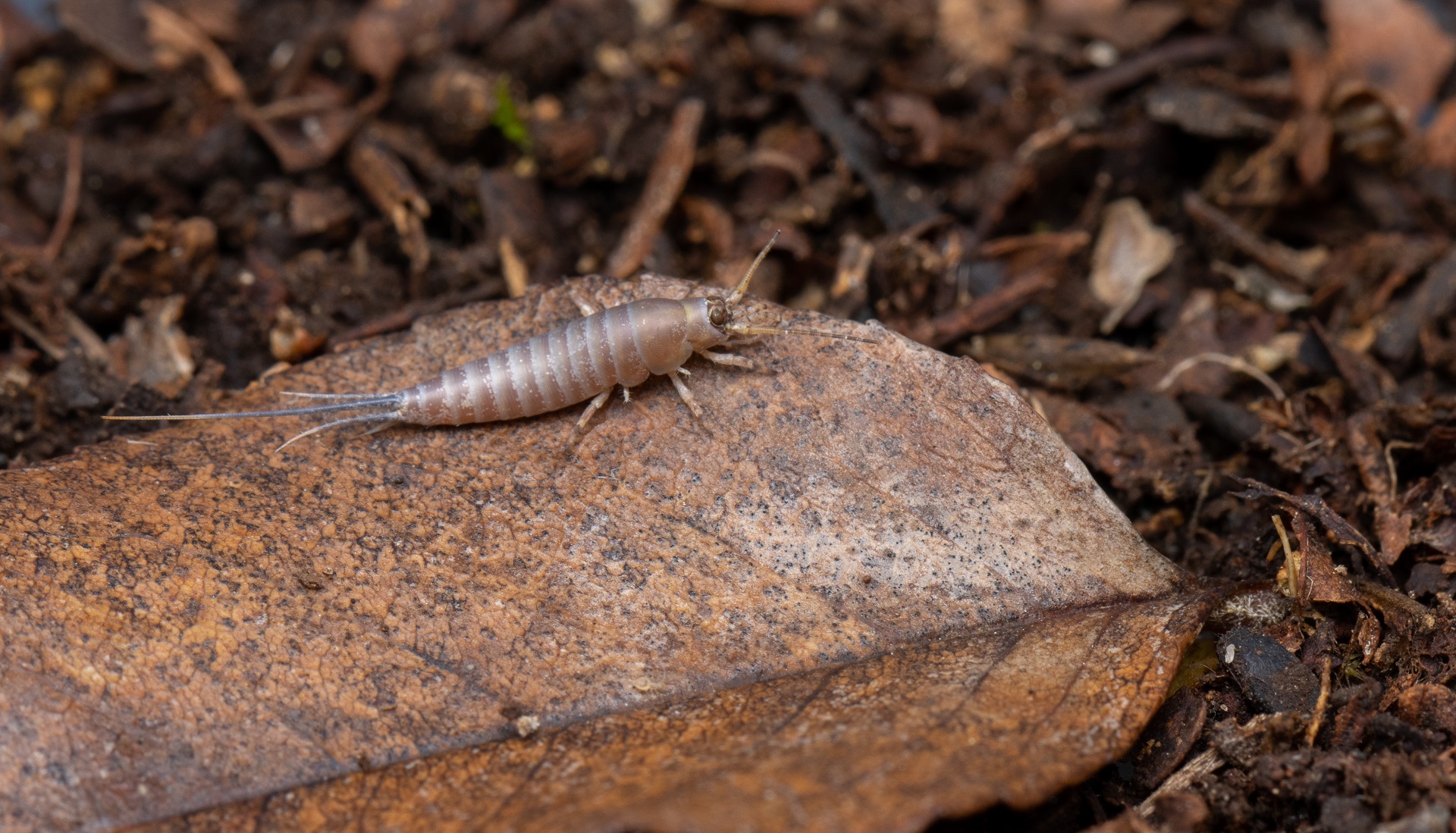
Sorodni členonožci

Authors
- Urban Bogataj,
- Gregor Bračko,
- Teo Delič,
- Cene Fišer,
- Žiga Fišer,
- Rok Kostanjšek,
- Rudi Verovnik,
- Miloš Vittori,
- Valerija Zakšek.
Students Vito Ham, Vesna Jurjevič, Gaj Kušar, and Adrijan Samuel Stell Pičman also participated in the project.
